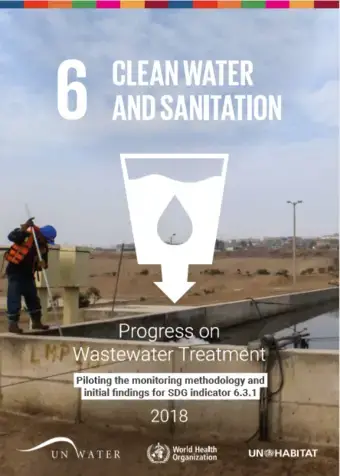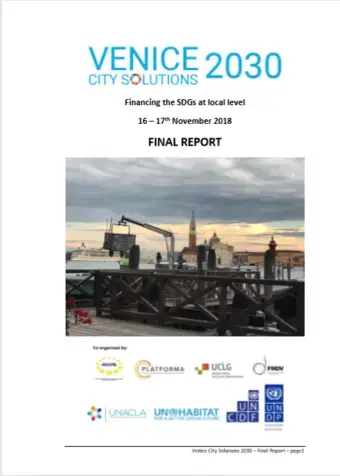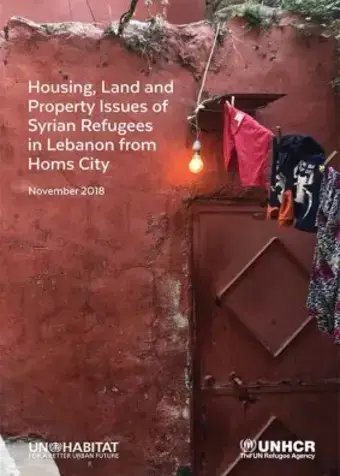 Published in 2008, UN-Habitat developed a reader-friendly booklet with the aim of promoting community-led housing reconstruction. The booklet provides basic technical and financial instructions that would allow affected families, after Lebanon 2006 war, to plan, in an adequate manner and to finish the reconstruction of their houses.
Published in 2008, UN-Habitat developed a reader-friendly booklet with the aim of promoting community-led housing reconstruction. The booklet provides basic technical and financial instructions that would allow affected families, after Lebanon 2006 war, to plan, in an adequate manner and to finish the reconstruction of their houses.
Report on Mobility of Care Assessment of Nairobi's Public Minibus Transport Services
 The concept Mobility of Care was coined in 2008 by Professor Inés Sánchez de Madariaga as a result of a research project she carried out for the Spanish Ministry of Infrastructure (Sánchez de Madariaga, 2009). This research project involved a gender analysis of the main Spanish transport surveys. The objective was to identify gender bias throughout the process of data collection, categorization, analysis, and representation.
The concept Mobility of Care was coined in 2008 by Professor Inés Sánchez de Madariaga as a result of a research project she carried out for the Spanish Ministry of Infrastructure (Sánchez de Madariaga, 2009). This research project involved a gender analysis of the main Spanish transport surveys. The objective was to identify gender bias throughout the process of data collection, categorization, analysis, and representation.
Argentina adopts its first-ever National Urban Policy
In 2017, the newl y elected Government of Argentina requested support from UN-Habitat to develop a policy to support balanced regional development of its large territory, and foster inclusive development of its cities. With 91 per cent of Argentina urbanized, the project was aimed at harnessing urbanization and enhancing its benefits, working in close collaboration with key national stakeholders.
y elected Government of Argentina requested support from UN-Habitat to develop a policy to support balanced regional development of its large territory, and foster inclusive development of its cities. With 91 per cent of Argentina urbanized, the project was aimed at harnessing urbanization and enhancing its benefits, working in close collaboration with key national stakeholders.
Local Economic Development, micro-entreprise and crime reduction: Lessons from Cali, Colombia
 This Policy Brief argues that successful initiatives to tackle Cali’s exceptionally high homicide rates also have potential for local economic development, and suggests ways that the significant value-added by informal enterprises can be harnessed to achieve wider economic objectives. It examines innovations in supporting micro-enterprise and crime reduction in Cali and the lessons for local economic development (LED), local government policy and NGO agendas.
This Policy Brief argues that successful initiatives to tackle Cali’s exceptionally high homicide rates also have potential for local economic development, and suggests ways that the significant value-added by informal enterprises can be harnessed to achieve wider economic objectives. It examines innovations in supporting micro-enterprise and crime reduction in Cali and the lessons for local economic development (LED), local government policy and NGO agendas.
 UN-Habitat in partnership with Cardiff University has developed a report titled: Prosperity for All: Enhancing the Informal Economy through Participatory Slum Upgrading.
UN-Habitat in partnership with Cardiff University has developed a report titled: Prosperity for All: Enhancing the Informal Economy through Participatory Slum Upgrading.  Outlining the main activities led by UN-Habitat in the area of risk reduction and resilience over the 2017, the annual report covers technical cooperation with cities, knowledge creation and management, and advocacy, communication and awareness. For more information on our work, please contact us.
Outlining the main activities led by UN-Habitat in the area of risk reduction and resilience over the 2017, the annual report covers technical cooperation with cities, knowledge creation and management, and advocacy, communication and awareness. For more information on our work, please contact us. What is a resilient city? Why is it important? and who needs to act to keep the cities, and its resident, safe? This short and accessible flyer answers these questions and outlines UN-Habitat’s contribution to sustainable and resilient cities.
What is a resilient city? Why is it important? and who needs to act to keep the cities, and its resident, safe? This short and accessible flyer answers these questions and outlines UN-Habitat’s contribution to sustainable and resilient cities.

